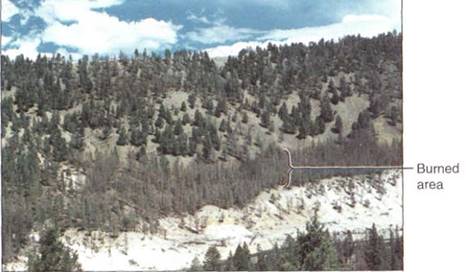

النبات

مواضيع عامة في علم النبات

الجذور - السيقان - الأوراق

النباتات الوعائية واللاوعائية

البذور (مغطاة البذور - عاريات البذور)

الطحالب

النباتات الطبية


الحيوان

مواضيع عامة في علم الحيوان

علم التشريح

التنوع الإحيائي

البايلوجيا الخلوية


الأحياء المجهرية

البكتيريا

الفطريات

الطفيليات

الفايروسات


علم الأمراض

الاورام

الامراض الوراثية

الامراض المناعية

الامراض المدارية

اضطرابات الدورة الدموية

مواضيع عامة في علم الامراض

الحشرات


التقانة الإحيائية

مواضيع عامة في التقانة الإحيائية


التقنية الحيوية المكروبية

التقنية الحيوية والميكروبات

الفعاليات الحيوية

وراثة الاحياء المجهرية

تصنيف الاحياء المجهرية

الاحياء المجهرية في الطبيعة

أيض الاجهاد

التقنية الحيوية والبيئة

التقنية الحيوية والطب

التقنية الحيوية والزراعة

التقنية الحيوية والصناعة

التقنية الحيوية والطاقة

البحار والطحالب الصغيرة

عزل البروتين

هندسة الجينات


التقنية الحياتية النانوية

مفاهيم التقنية الحيوية النانوية

التراكيب النانوية والمجاهر المستخدمة في رؤيتها

تصنيع وتخليق المواد النانوية

تطبيقات التقنية النانوية والحيوية النانوية

الرقائق والمتحسسات الحيوية

المصفوفات المجهرية وحاسوب الدنا

اللقاحات

البيئة والتلوث


علم الأجنة

اعضاء التكاثر وتشكل الاعراس

الاخصاب

التشطر

العصيبة وتشكل الجسيدات

تشكل اللواحق الجنينية

تكون المعيدة وظهور الطبقات الجنينية

مقدمة لعلم الاجنة


الأحياء الجزيئي

مواضيع عامة في الاحياء الجزيئي


علم وظائف الأعضاء


الغدد

مواضيع عامة في الغدد

الغدد الصم و هرموناتها

الجسم تحت السريري

الغدة النخامية

الغدة الكظرية

الغدة التناسلية

الغدة الدرقية والجار الدرقية

الغدة البنكرياسية

الغدة الصنوبرية

مواضيع عامة في علم وظائف الاعضاء

الخلية الحيوانية

الجهاز العصبي

أعضاء الحس

الجهاز العضلي

السوائل الجسمية

الجهاز الدوري والليمف

الجهاز التنفسي

الجهاز الهضمي

الجهاز البولي


المضادات الميكروبية

مواضيع عامة في المضادات الميكروبية

مضادات البكتيريا

مضادات الفطريات

مضادات الطفيليات

مضادات الفايروسات

علم الخلية

الوراثة

الأحياء العامة

المناعة

التحليلات المرضية

الكيمياء الحيوية

مواضيع متنوعة أخرى

الانزيمات
Introduction to Populations and Ecosystems of Plants
المؤلف:
AN INTRODUCTION TO PLANT BIOLOGY-1998
المصدر:
JAMES D. MAUSETH
الجزء والصفحة:
20-10-2016
2694
Introduction to Populations and Ecosystems of Plants
Ecology is the study of organisms in relation to all aspects of their surroundings. Throughout this book, emphasis has been placed on the importance of analyzing structure, metabolism, and diversity in terms of adaptation and fitness. Mutations result in new alleles that alter the phenotype; then natural selection eliminates those that are less well-adapted but retains those that increase fitness. Most factors have been discussed individually—for example, the effect of trichomes in deterring insects from chewing leaves and the ability of carotenoids to protect chlorophyll from excess sunlight. But most factors that affect a plant's health and survival are present together in the habitat, acting on the plant simultaneously. We must try to understand the plant in relation to its entire habitat, to all components of its surroundings.
An individual plant never exists in isolation in a habitat; instead, there are other individuals of the same species and together they constitute a population (Fig. .1). Individuals of plant populations often do not interact strongly, but the biology of (he population is more than just the sum of all the biologies of individuals. In a species

FIGURE .1: The numerous individuals of one species constitute a population. They depend on each other for gametes during sexual reproduction and also support a healthy population of pollinators and seed dispersers. Because there are several species, the photograph shows a community of several populations. When the soil and atmospheric components are added, an ecosystem results.
That consists of either dioecious or self-sterile individuals, a population can carry out successful sexual reproduction, but an individual cannot. If pollinated by animals, a single individual usually cannot produce enough nectar or pollen to keep even one pollinator alive, but a population of plants can sustain a population of pollinators. On the negative side, a population may be dense enough that spores from a pathogenic fungus are ensured of landing on at least one susceptible individual and then spreading to others, whereas if an individual could exist in isolation far removed from others, it might be safe from pathogens, predators, and natural catastrophes such as fires (Fig. .2).

FIGURE .2: Trees in dense populations were killed by fire. Identical trees in sparse populations survived.
A population also does not exist in isolation, but rather coexists with numerous populations of other plant species as well as populations of animals, fungi, protests, and prokaryotes. All the populations together constitute a community, which when considered along with the physical, nonliving environment is an ecosystem. These contribute additional levels of interactions and complexity and make it more difficult to be precisely certain of the effects of factors on individuals. The presence of trichomes may deter leaf- eating insects, but those insects might have frightened away more damaging egg-laying insects. Besides, the leaf-eating insects might have had a beneficial role by dropping nutrient-rich fecal pellets to the soil where they might have encouraged the growth of mycorrhizal fungi. The structure, metabolism, and diversity of plants cannot be fully understood without understanding the ecosystem.
 الاكثر قراءة في مواضيع عامة في علم النبات
الاكثر قراءة في مواضيع عامة في علم النبات
 اخر الاخبار
اخر الاخبار
اخبار العتبة العباسية المقدسة

الآخبار الصحية















 قسم الشؤون الفكرية يصدر كتاباً يوثق تاريخ السدانة في العتبة العباسية المقدسة
قسم الشؤون الفكرية يصدر كتاباً يوثق تاريخ السدانة في العتبة العباسية المقدسة "المهمة".. إصدار قصصي يوثّق القصص الفائزة في مسابقة فتوى الدفاع المقدسة للقصة القصيرة
"المهمة".. إصدار قصصي يوثّق القصص الفائزة في مسابقة فتوى الدفاع المقدسة للقصة القصيرة (نوافذ).. إصدار أدبي يوثق القصص الفائزة في مسابقة الإمام العسكري (عليه السلام)
(نوافذ).. إصدار أدبي يوثق القصص الفائزة في مسابقة الإمام العسكري (عليه السلام)


















